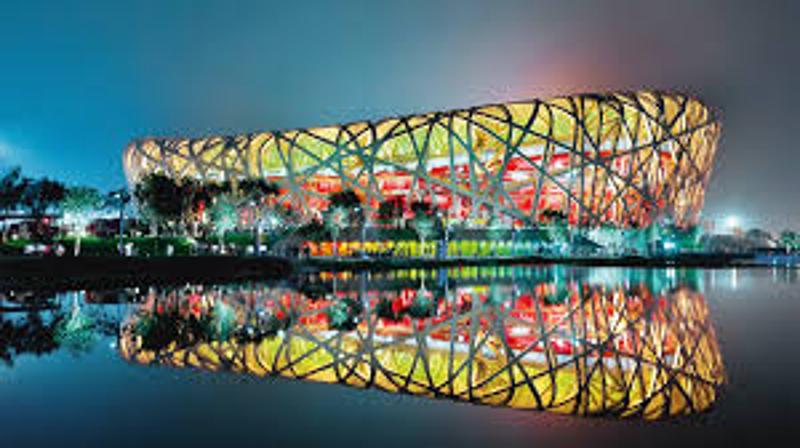
Beijing National Stadium: The Bird's Nest - A Symbol of Architectural Innovation
History and Background
The Beijing National Stadium, affectionately nicknamed the "Bird's Nest" due to its intricate lattice-like structure, stands as a testament to China's architectural prowess and its emergence on the global stage. Constructed to host the 2008 Summer Olympics and Paralympics, the stadium quickly became an iconic landmark, embodying both traditional Chinese aesthetics and cutting-edge design.
The stadium's genesis can be traced back to 2001 when Beijing won the bid to host the 2008 Olympics. An international design competition ensued, attracting renowned architects from around the world. The winning design, a collaboration between Swiss firm Herzog & de Meuron, Chinese artist Ai Weiwei, and CADG, captivated the world with its unique blend of form and function.
Design and Architecture
The stadium's design is a marvel of engineering and artistry. Its defining feature, the interwoven steel beams forming the "nest," is not merely aesthetic but serves a crucial structural role. This latticework supports the retractable roof and provides stability against seismic activity, a significant concern in the region.
The use of steel, a material not traditionally prevalent in Chinese architecture, further emphasizes the stadium's modernity. However, the design also pays homage to Chinese cultural heritage. The circular form of the stadium echoes traditional Chinese architecture, symbolizing heaven, while the interwoven beams resemble the intricate patterns found in Chinese ceramics and crafts.
Construction and Legacy
Constructing the Bird's Nest was a monumental undertaking, involving thousands of workers and innovative engineering techniques. Completed in 2008, the stadium boasts a seating capacity of over 80,000, expandable to 91,000 for specific events.
Beyond the Olympics, the stadium has continued to host a variety of events, including sporting competitions, concerts, and cultural performances. It has become a symbol of national pride and a must-visit destination for tourists from all over the world.
Visiting the Bird's Nest
A visit to the Bird's Nest offers a unique opportunity to witness architectural brilliance firsthand. Visitors can take guided tours that provide insights into the stadium's design, construction, and significance. The tours typically include access to the stands, offering breathtaking views of the stadium's interior and the surrounding Olympic Park.
Practical Information for Visitors:
| Aspect | Details |
|---|---|
| Location | Olympic Green, Chaoyang District, Beijing, China |
| Opening Hours | Typically 9:00 AM - 6:00 PM (subject to change) |
| Ticket Prices | Vary depending on tour type and inclusions |
| Getting There | Accessible by subway (Line 8, Olympic Sports Center Station) and bus |
Personal Reflections and Experiences
Stepping into the Bird's Nest, one is immediately struck by the sheer scale and grandeur of the structure. The intricate latticework of steel beams creates a sense of awe and wonder. The stadium's design, both modern and deeply rooted in Chinese tradition, sparks a sense of cultural appreciation.
Walking through the stands, one can almost feel the echoes of the cheering crowds from the 2008 Olympics. The stadium's legacy as a venue for unforgettable moments in sports history is palpable.
"The Bird's Nest is more than just a stadium; it's a symbol of China's emergence as a global power and its capacity for architectural innovation." - Architectural Digest
FAQs About the Beijing National Stadium
Q1: What is the significance of the Bird's Nest nickname?
A: The nickname "Bird's Nest" stems from the stadium's intricate lattice-like exterior, formed by interwoven steel beams that resemble a bird's nest.
Q2: Can visitors access the stadium outside of events?
A: Yes, the Bird's Nest offers guided tours that provide access to the stands and insights into the stadium's design and history.
Q3: What other attractions are located near the Beijing National Stadium?
A: The stadium is situated within the Olympic Green, home to other notable landmarks like the Water Cube (National Aquatics Center) and the Olympic Forest Park.
More article references: beijing capital indoor stadium